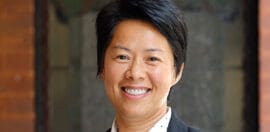Inclusive Leadership Means Building Diverse Teams

12 April 2017 at 5:32 pm
Fostering creative strategic thinking by building diverse teams can give not for profits a sustained competitive advantage, writes Mike Davis the founder of Purposeful.
In my previous March post for Pro Bono News, I discussed how effective Australian not-for-profit leaders are resourceful, inclusive and empowering. A key component of inclusiveness involves promoting diversity in teams and building diverse leadership teams.
Diversity improves performance
High performing teams are teams with well-balanced gender diversity as well as a good mix of ethnic and racial diversity.
The evidence supports this conclusion with a recent McKinsey report showing that organisations in the top quartile for ethnic and racial diversity in management are 35 per cent more likely to produce financial returns above the industry mean. Similarly, organisations in the top quartile for gender diversity were 15 per cent more likely to have returns above the industry mean.
But diversity extends beyond this to having a team with a broad range of skills and experience, varied emotional intelligence and capacity, mixed age, seniority and beginners in industry and varied backgrounds, life and professional experience.
Case study: Neurodiversity
Neurodiversity is the latest type of diversity to attract strong interest both in the US and increasingly in Australia. This is the practice of recruiting a range of employees with diversity of neurological conditions. This has been shown to have positive effects for large multinational organisations such as EY and Microsoft.
The benefit or value of neurodiversity as with other forms of diversity listed above, are that they enable groups to form, comprised of people that have a great variance in the way that they think.
Solving the “wicked problems” of today calls for leaders who can quickly draw upon diverse, creative and adaptive thinking patterns.
Building diverse teams
It’s important that leaders do their utmost to ensure their teams have a good mix of experience and thinking style.
An area where leaders can improve recruitment is to do more to build teams that have stronger representation from the following highly talented and underrepresented demographics: the LGBTI community, people with disabilities, Aboriginal and Torres Strait Islanders, refugees and asylum seekers, older and semi-retired people (70+) and neurodiverse people.
The unique and treasured experiences of these groups could dramatically enrich the thinking of some of our finest leaders and their organisations. It would also be great to see more people from these groups holding senior leadership positions, which would greatly benefit their organisation’s thinking.
Some leaders promoting the benefits of diversity in the workplace and leadership teams include Gemma O’Brien of CQ Cultural Consulting (Melbourne City Mission), a social enterprise helping organisations to develop cultural intelligence and unlocking the benefits of diversity and Tayo Rockson (US) of UYD Management, which helps corporations improve their bottom line by incorporating diversity, inclusion and social justice strategies.
Usman Iftikhar is adopting a different approach, with his social enterprise and incubator Catalysr, supporting people from migrant and refugee backgrounds to break down barriers to employment by starting their own businesses.
At a time when creating value, attracting funding and differentiating from the competition are vital, fostering diverse and creative strategic thinking can give not for profits a sustained competitive advantage. This starts with building diverse teams and leadership groups.
About the author: Mike Davis is the founder of Purposeful. He is also creator and host of the Humans of Purpose podcast and a director at SIMNA.







